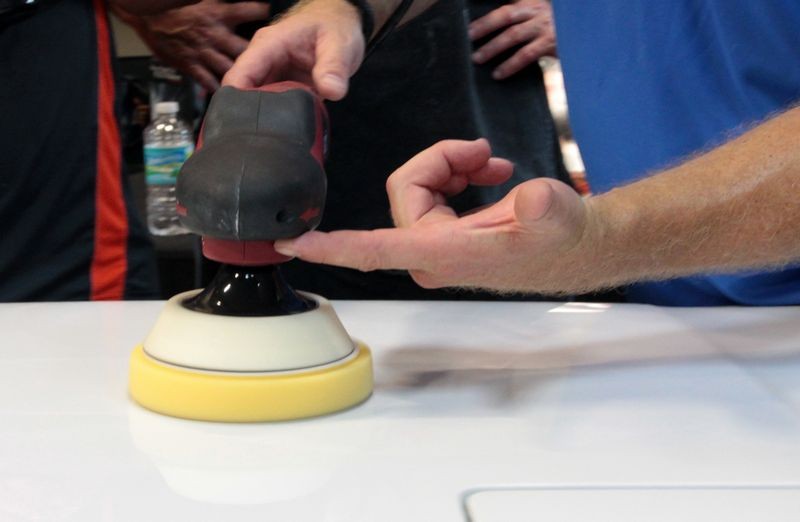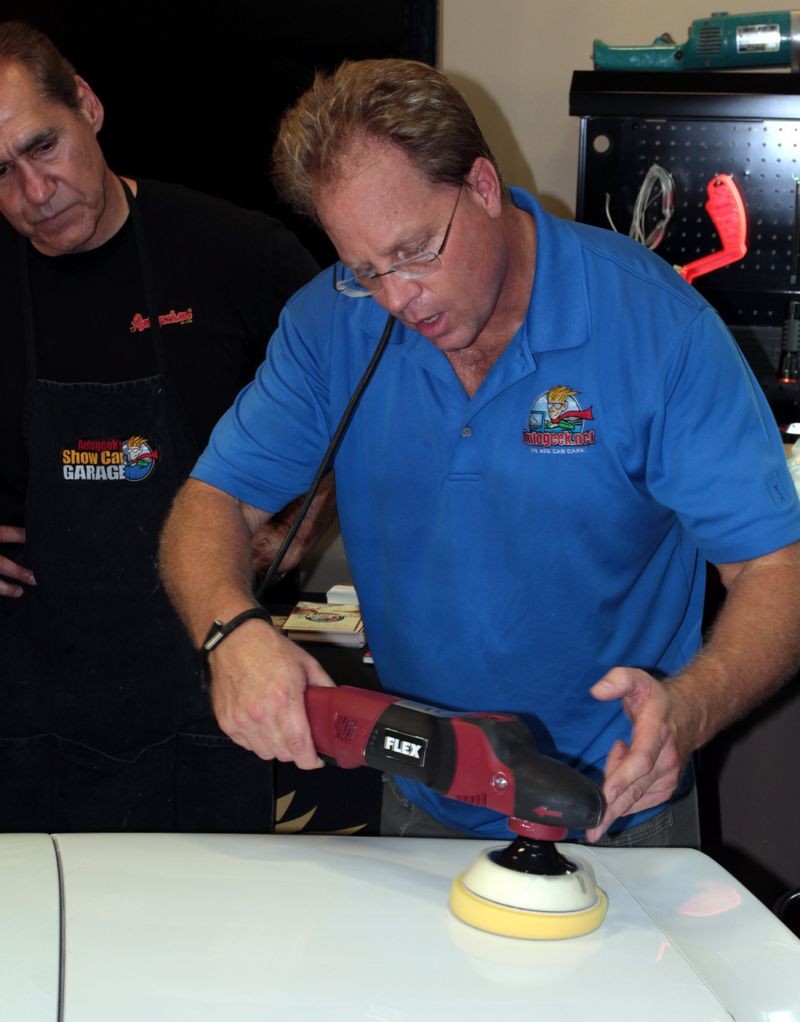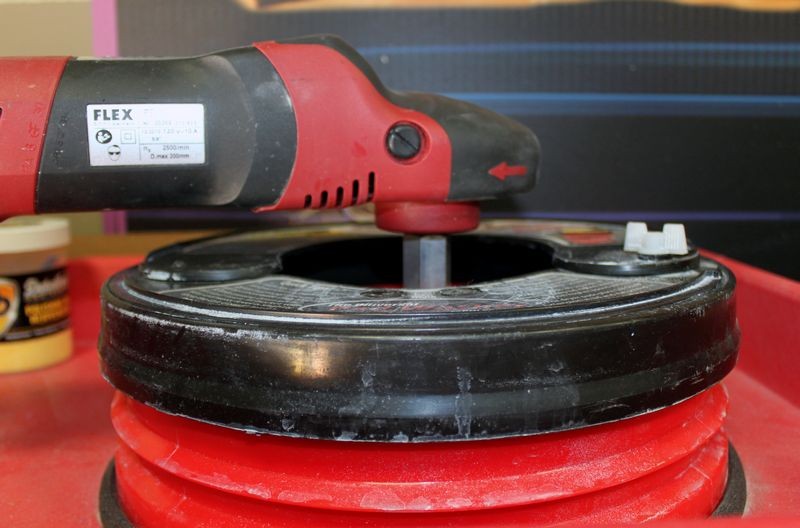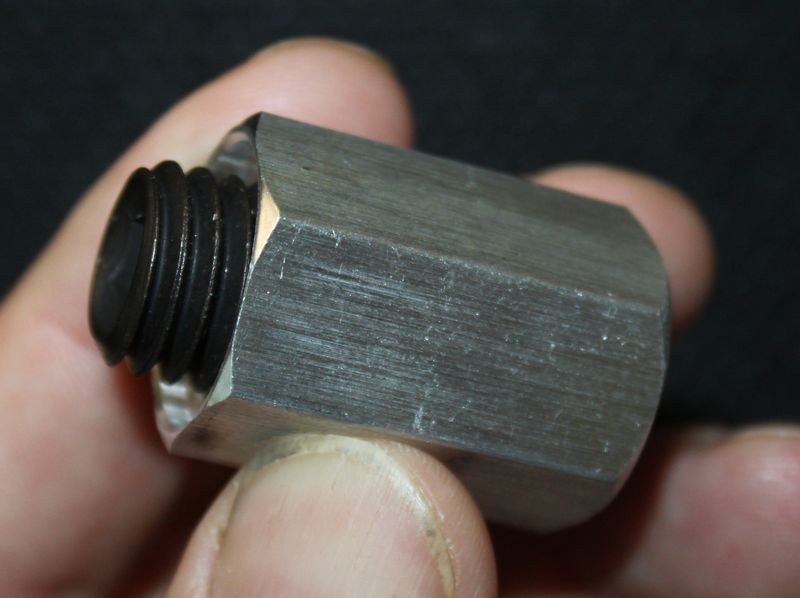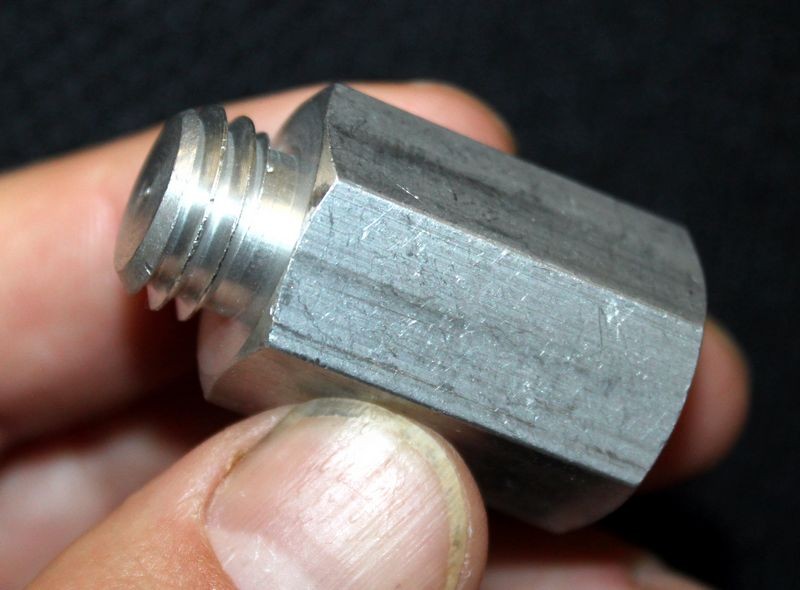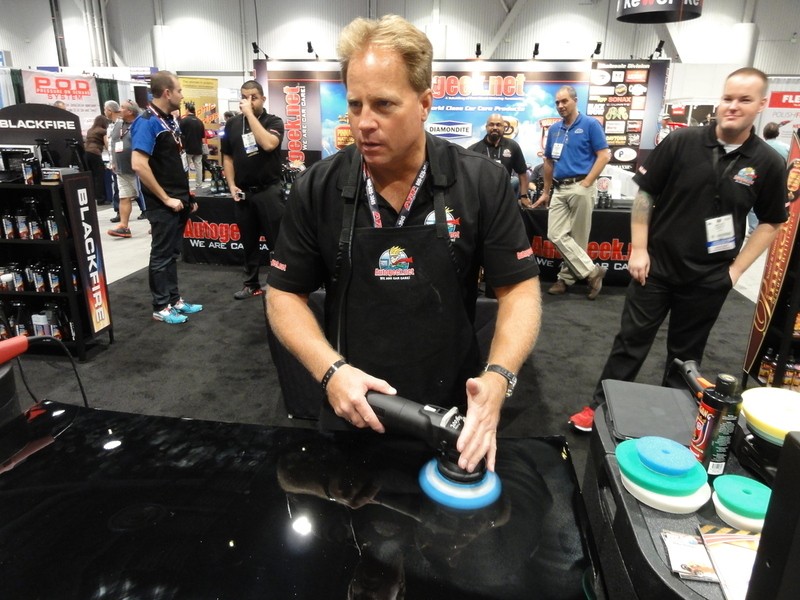Mike Phillips
Active member
- Dec 5, 2022
- 51,004
- 6
How to polish thin body panels
This is a question that comes up a lot in the detailing world. That is,
How do you compound and polish thin body panels without at the same time buffing on an edge or a raised body line?
Working by hand
One method is to work by hand. Working by hand will get the job done but believe it or not, more skill is required to work by hand than to work by machine.
Some people believe acquiring the skills to correctly use a machine to polish to perfection without at the same time inducing swirls into the paint or burning through the edges or high points is an art form.
The reason why is because not only does it require skill (which comes from real world hands-on experience plus knowledge), and also the right tools, pads and products to truly get perfect results... but it also requires something each of us as craftsmen bring to the table and that's the human elements of care and passion.
By this I mean if I'm going to hire a so called professional detailer to work on my car I don't want to hire a person that's merely in it for the money.
I want a person that truly has a passion for the craft and cares about their work, their customer's satisfaction and their own reputation. And it's from all of these things, skill, knowledge, the right tools, pads and products plus the human elements of care and passion that I believe polishing paint becomes an art form.
Now let me bring this back to why it requires more skill to work by hand than by machine.
With modern dual action orbital polishers just about anyone can get great results simply by turning on the machine and making a few methodical section passes over the paint. Of course it's also important to use high quality compounds and polishes but as long as a person is doing this then seriously, it's not like the old days when all we had was a rotary buffer or an old fashioned large orbital buffer.

With today’s orbital tools anyone can get high quality results by machine.
Not so when it comes to working by hand and when I say working by hand I mean removing swirls and scratches out of clearcoat paints.
Modern clearcoat paints are much harder than traditional single stage paints and it's this hardness factor that makes it more difficult for the average person to take their hand with their 5 fingers and rub hard enough and fast enough using the right applicator pad and compounds and polishes in order to actually remove swirls and scratches without leaving their own swirls and scratches in the paint at the same time.
I know for a fact from experience after spending most of my life teaching people how to polish paint including teaching both hand techniques and machine techniques and I'm here to tell you most people don't have the necessary skills to remove swirls and scratches by hand. They also don't have the patience nor physical ability to rub out an entire car by hand.
Sure they can hand apply a wax but there's a HUGE difference in spreading out a product and then wiping it off and forcing a compound or polish over the surface in a fast, tight controlled pattern with firm downward pressure to remove defects.
I'll even go as far as to say that when most people attempt to remove swirls and scratches by hand not only do they fail and give up but unless they are using high quality compounds and polishes chances are very good they'll do more damage than good. It is at this point the only way to recover from the damage is in fact to machine polish to correct the defects.
So how can a person compound and polish the thin panels on a car?
By machine of course! Using smaller pads on smaller tools and always using high quality compounds and polishes.
Here are some examples of thin body panels with either edges or raised body lines on either side of the flat thin sections of paint and how to use the Flex PE8 Kompact Rotary Polisher to work these areas safely.

Note how the 1" pad fits this thin body panel perfectly...

Finger Painting
I call this finger painting; it's where you smear some of the product you want to use onto the paint you want to buff when using small pads instead of trying to pick a bead up using the 10 @ 10 Technique.

Edge Priming
Lubricate the sides of your buffing pad anytime you're going to be buffing in tight areas.



Thin body panels
Most cars, both moderns and classics like this 1965 Mustang have thin body panels somewhere in the body design.




The 10 @ 10 Technique in action using a 3" pad



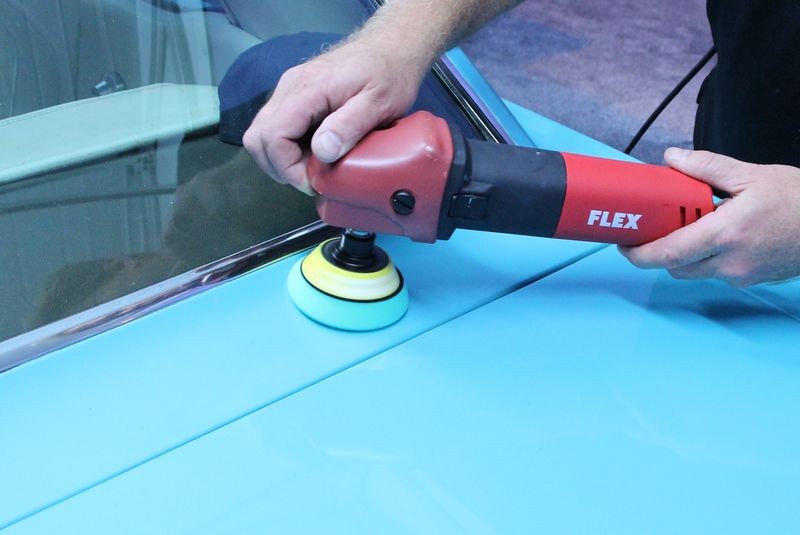




This is one method of how to polish thin body panels by machine to get the job done without having to be a seasoned expert in the art of hand polishing.
Here's where to get yours....
Flex PE8 Kompact Rotary Polisher
FLEX Rotary Backing Plates – 1, 2, 3 Inch Diameter
FLEX Rotary Foam Pads – 1, 2, 3 Inch Diameter
Rotary Backing Plate Extension
:dblthumb2:
This is a question that comes up a lot in the detailing world. That is,
How do you compound and polish thin body panels without at the same time buffing on an edge or a raised body line?
Working by hand
One method is to work by hand. Working by hand will get the job done but believe it or not, more skill is required to work by hand than to work by machine.
Some people believe acquiring the skills to correctly use a machine to polish to perfection without at the same time inducing swirls into the paint or burning through the edges or high points is an art form.
The reason why is because not only does it require skill (which comes from real world hands-on experience plus knowledge), and also the right tools, pads and products to truly get perfect results... but it also requires something each of us as craftsmen bring to the table and that's the human elements of care and passion.
By this I mean if I'm going to hire a so called professional detailer to work on my car I don't want to hire a person that's merely in it for the money.
I want a person that truly has a passion for the craft and cares about their work, their customer's satisfaction and their own reputation. And it's from all of these things, skill, knowledge, the right tools, pads and products plus the human elements of care and passion that I believe polishing paint becomes an art form.
Now let me bring this back to why it requires more skill to work by hand than by machine.
With modern dual action orbital polishers just about anyone can get great results simply by turning on the machine and making a few methodical section passes over the paint. Of course it's also important to use high quality compounds and polishes but as long as a person is doing this then seriously, it's not like the old days when all we had was a rotary buffer or an old fashioned large orbital buffer.
With today’s orbital tools anyone can get high quality results by machine.
Not so when it comes to working by hand and when I say working by hand I mean removing swirls and scratches out of clearcoat paints.
Modern clearcoat paints are much harder than traditional single stage paints and it's this hardness factor that makes it more difficult for the average person to take their hand with their 5 fingers and rub hard enough and fast enough using the right applicator pad and compounds and polishes in order to actually remove swirls and scratches without leaving their own swirls and scratches in the paint at the same time.
I know for a fact from experience after spending most of my life teaching people how to polish paint including teaching both hand techniques and machine techniques and I'm here to tell you most people don't have the necessary skills to remove swirls and scratches by hand. They also don't have the patience nor physical ability to rub out an entire car by hand.
Sure they can hand apply a wax but there's a HUGE difference in spreading out a product and then wiping it off and forcing a compound or polish over the surface in a fast, tight controlled pattern with firm downward pressure to remove defects.
I'll even go as far as to say that when most people attempt to remove swirls and scratches by hand not only do they fail and give up but unless they are using high quality compounds and polishes chances are very good they'll do more damage than good. It is at this point the only way to recover from the damage is in fact to machine polish to correct the defects.
So how can a person compound and polish the thin panels on a car?
By machine of course! Using smaller pads on smaller tools and always using high quality compounds and polishes.
Here are some examples of thin body panels with either edges or raised body lines on either side of the flat thin sections of paint and how to use the Flex PE8 Kompact Rotary Polisher to work these areas safely.
Note how the 1" pad fits this thin body panel perfectly...
Finger Painting
I call this finger painting; it's where you smear some of the product you want to use onto the paint you want to buff when using small pads instead of trying to pick a bead up using the 10 @ 10 Technique.
Edge Priming
Lubricate the sides of your buffing pad anytime you're going to be buffing in tight areas.
Thin body panels
Most cars, both moderns and classics like this 1965 Mustang have thin body panels somewhere in the body design.
The 10 @ 10 Technique in action using a 3" pad
This is one method of how to polish thin body panels by machine to get the job done without having to be a seasoned expert in the art of hand polishing.
Here's where to get yours....
Flex PE8 Kompact Rotary Polisher
FLEX Rotary Backing Plates – 1, 2, 3 Inch Diameter
FLEX Rotary Foam Pads – 1, 2, 3 Inch Diameter
Rotary Backing Plate Extension
:dblthumb2:
